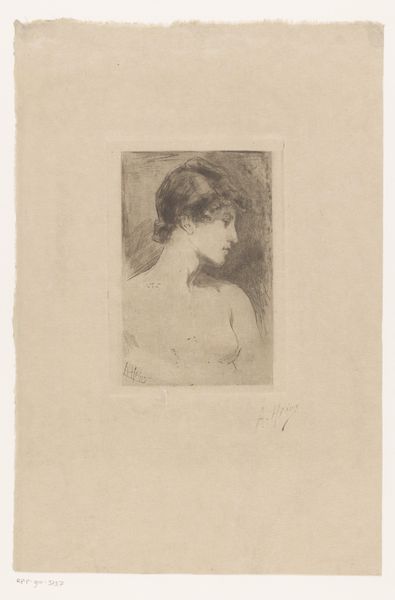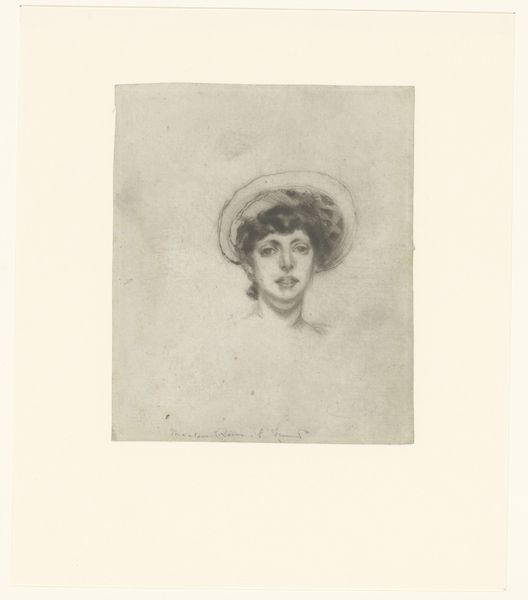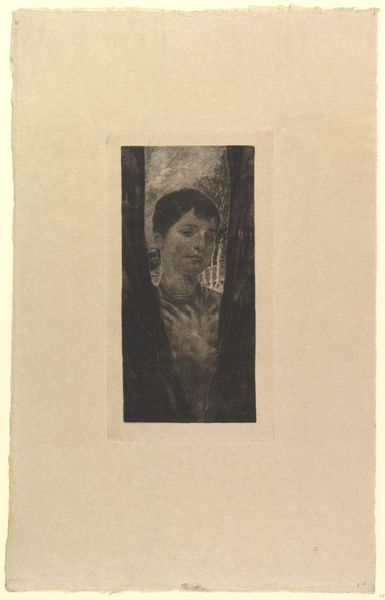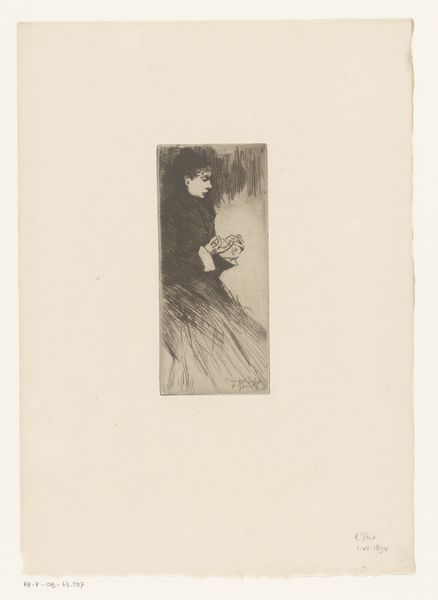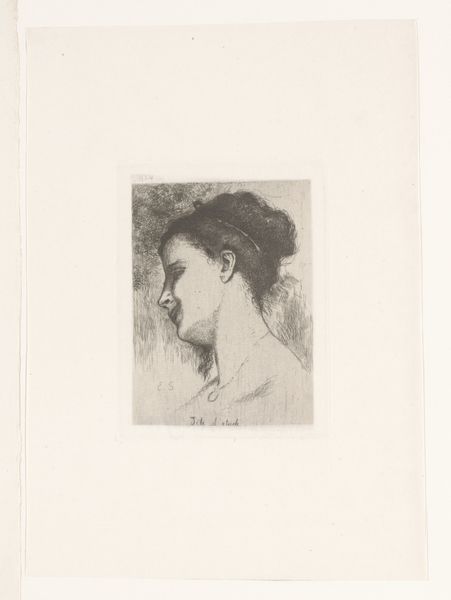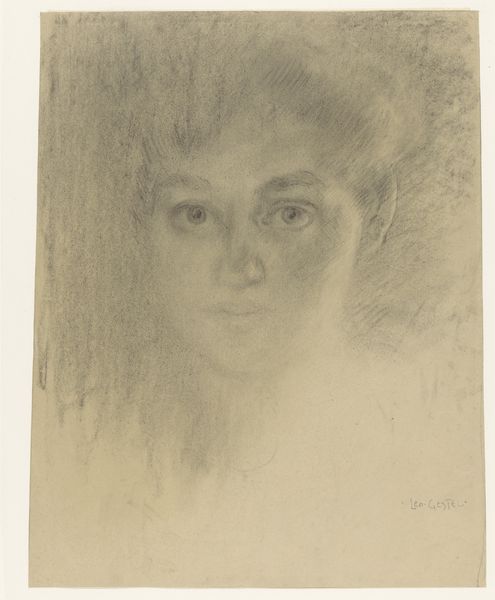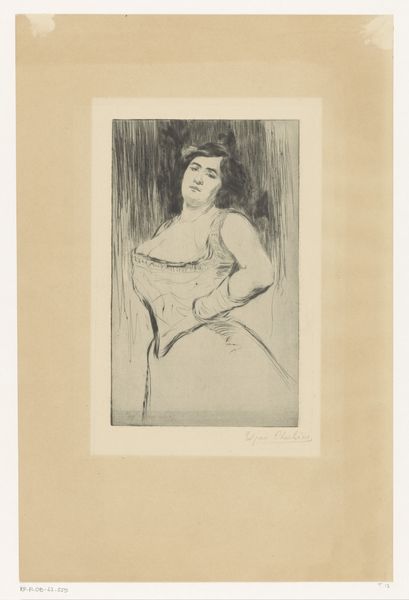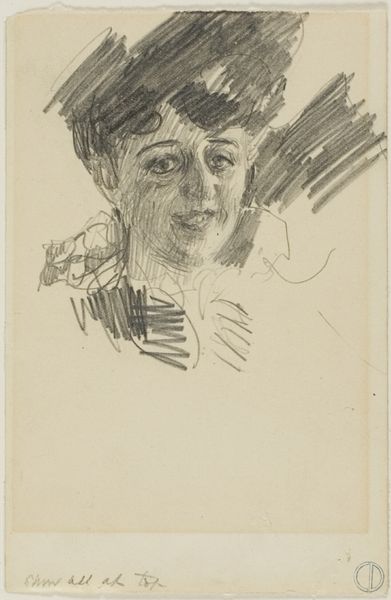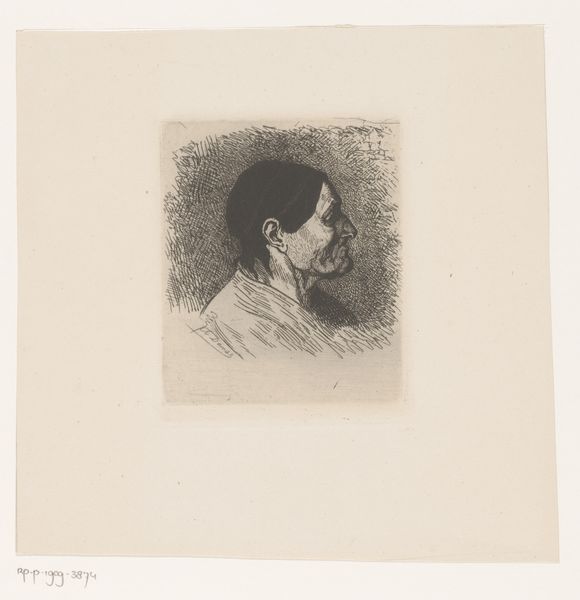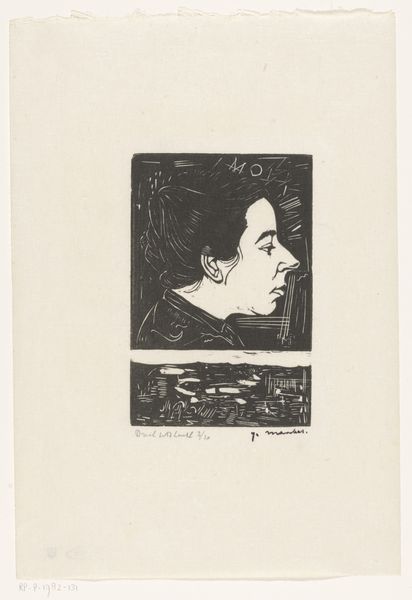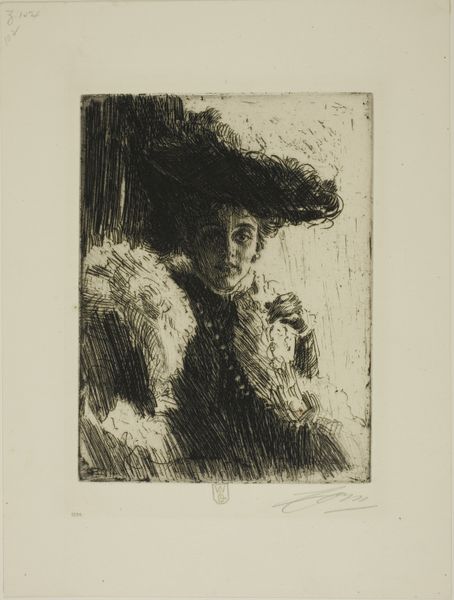
drawing, print, etching, paper, ink
#
portrait
#
drawing
# print
#
etching
#
german-expressionism
#
paper
#
ink
#
pencil drawing
#
intimism
Dimensions: height 248 mm, width 169 mm
Copyright: Rijks Museum: Open Domain
Curator: Here we have Otto Goetze's "Young Woman Before a Mirror," created sometime between 1878 and 1931, using etching and ink on paper. Editor: It's immediately striking how intimate this feels, like we're intruding on a private moment of self-reflection, both literally and figuratively. There's a delicate melancholy hanging in the air. Curator: Absolutely. Goetze places us in that fin-de-siècle moment. We need to consider the rapid industrialization of Germany at the time. Women’s roles were being redefined, pushing against patriarchal norms and forging new identities. How does the artist depict her within this changing context? Editor: The mirror itself is doing so much work. It suggests duality and the complexities of identity. Mirrors have always represented vanity, yes, but also deeper truths and the subconscious. She seems both present and distant, trapped between her internal world and the expectations projected upon her. Her gaze is direct, almost confrontational. Is she challenging us, or herself? Curator: I agree. The direct gaze, combined with the work's German Expressionist leaning, highlights the inner psychological state. The artist’s manipulation of light and shadow heightens the drama. How does that play into the broader political climate influencing Goetze’s style? Editor: The shadowing around her eyes hints at anxiety, but it might also suggest wisdom. The period clothes seem at odds with a growing sense of freedom. Those contrasts feel deliberate. Curator: It’s tempting to read her elaborate hairstyle through the lens of consumerism, too. Is she adopting those feminine roles, or subverting them by meeting our gaze so frankly? And the 'intimism' adds another layer. The etching medium creates this atmosphere of immediacy that draws the viewer in close. Editor: Yes! And that immediacy reinforces the sense that we are participating in a specific encounter – perhaps one steeped in longing. The symbols offer possibilities rather than definitive answers. It's an exploration of a changing identity through an image of an ordinary woman. Curator: In a period of social upheaval, images like this encouraged self-reflection, challenging viewers to consider what kind of society they wished to build for the future. A subtle indictment through intimacy, if you will. Editor: Indeed, Goetze seems to have woven quite a complex emotional tapestry here.
Comments
No comments
Be the first to comment and join the conversation on the ultimate creative platform.

